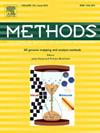Bio-impedance spectroscopy-based classification of mental acuity in university students via machine-learning and deep-learning approaches
IF 4.3
3区 生物学
Q1 BIOCHEMICAL RESEARCH METHODS
引用次数: 0
Abstract
Mental acuity detection is crucial for identifying cognitive impairments linked to body composition imbalances and ensuring overall mental and physical fitness. This study introduces a deep-learning neural network (NN) model with MobileNetV2 deep learning architecture to classify mental acuity levels of university students—excellent, good, and average—using bioelectrical impedance spectroscopy (BIS)-based body composition and bio-impedance measurements. Body composition and bio-impedance features such as basal metabolic rate (BMR), body cell mass (BCM), total body water (TBW), bioelectrical impedance (BI), and phase angle (PA) were utilized as inputs for a feature-based random forest (RF) machine-learning model, achieving an accuracy of 88.26% and an F1-score of 84.89%. However, an image-based NN model with MobileNetV2 deep learning architecture, leveraging 2D impedance spectrum images, outperformed RF model, achieving exceptional accuracy of 98.39% and an F1-score of 97.83%. Additionally, the Nyquist diagram showed that excellent mental acuity had the smallest semicircle, average mental acuity had the largest, and good mental acuity level was intermediate. Similarly, feature analysis revealed that excellent mental acuity level corresponded to high BMR, BCM, TBW, and PA with low BI, while average mental acuity level had the opposite trend, while good mental acuity levels fell in between. The reliability and performance of the NN model in detecting mental acuity using 2D impedance spectrum analysis highlights its potential for this task. These results emphasize the value of deep-learning approaches in integrating BIS data for accurate mental acuity assessment and their broader implications for monitoring cognitive health.
基于生物阻抗谱的大学生心理敏锐度机器学习和深度学习分类
精神敏锐度检测对于识别与身体成分失衡有关的认知障碍和确保整体身心健康至关重要。本研究采用基于生物电阻抗谱(BIS)的身体成分和生物阻抗测量,引入了一个具有MobileNetV2深度学习架构的深度学习神经网络(NN)模型,对大学生的心理敏锐度水平进行了优秀、良好和一般的分类。将基础代谢率(BMR)、体细胞质量(BCM)、总水量(TBW)、生物电阻抗(BI)和相位角(PA)等身体组成和生物阻抗特征作为基于特征的随机森林(RF)机器学习模型的输入,准确率为88.26%,f1得分为84.89%。然而,使用MobileNetV2深度学习架构的基于图像的神经网络模型,利用二维阻抗谱图像,优于RF模型,实现了98.39%的卓越准确率和97.83%的f1得分。此外,Nyquist图表显示,优秀的精神敏锐度的半圆最小,一般的精神敏锐度的半圆最大,良好的精神敏锐度的半圆为中间。同样,特征分析显示,优秀的精神敏锐度水平对应于高BMR、BCM、TBW和低BI的PA,而平均的精神敏锐度水平则相反,良好的精神敏锐度水平介于两者之间。神经网络模型在利用二维阻抗谱分析检测精神敏锐度方面的可靠性和性能突出了它在这项任务中的潜力。这些结果强调了深度学习方法在整合BIS数据以进行准确的精神敏锐度评估方面的价值,以及它们对监测认知健康的更广泛影响。
本文章由计算机程序翻译,如有差异,请以英文原文为准。
求助全文
约1分钟内获得全文
求助全文
来源期刊

Methods
生物-生化研究方法
CiteScore
9.80
自引率
2.10%
发文量
222
审稿时长
11.3 weeks
期刊介绍:
Methods focuses on rapidly developing techniques in the experimental biological and medical sciences.
Each topical issue, organized by a guest editor who is an expert in the area covered, consists solely of invited quality articles by specialist authors, many of them reviews. Issues are devoted to specific technical approaches with emphasis on clear detailed descriptions of protocols that allow them to be reproduced easily. The background information provided enables researchers to understand the principles underlying the methods; other helpful sections include comparisons of alternative methods giving the advantages and disadvantages of particular methods, guidance on avoiding potential pitfalls, and suggestions for troubleshooting.
 求助内容:
求助内容: 应助结果提醒方式:
应助结果提醒方式:


